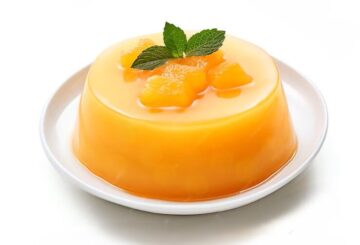
Whoa, have you ever had mango pudding? You're really losing out if you don't! This dessert is all a tropical fantasy could be.
Imagine biting into a creamy, velvety pudding that's bursting with the fresh, sweet flavors of ripe, juicy mangoes. That's exactly what this divine treat tastes like. It's like a party in your mouth with every delightful spoonful.
The key to an amazing mango pudding is using the best, most luscious mangoes you can find. We're talking about those super ripe, fragrant ones that are practically dripping with sweetness. They get puréed into the silkiest, most luscious mango base ever.
But it doesn't stop there! The mango purée gets combined with rich ingredients like milk, cream, and just the right amount of sugar to balance out that tangy-sweet mango flavor. And to get that perfect, jiggly pudding texture? A little gelatin or agar agar works like magic.
You can find mango pudding served up in so many fun ways - unmolded onto a plate with extra mango chunks on top, layered up all fancy in a parfait glass, or in cute little individual portions. However you have it, it's pure tropical bliss.
This dessert is really cool, especially in the summer. The vivid colors and delicious mango tastes instantly transport you to a beach where you may unwind. It's fruity, creamy, indulgent perfection in every bite.
If you haven't tried mango pudding yet, what are you waiting for? This Southeast Asian specialty deserves a spot at the top of your dessert list. Trust me, it'll have you dreaming of mangoes!

Mangoes:
This is the star ingredient! You'll need ripe, sweet mangoes like Alphonso, Ataulfo, or Kesar varieties. Approximately 2-3 large mangoes or 3 cups of fresh mango puree.
Milk:
Whole milk or a combination of milk and cream lends a rich, creamy texture. Around 2 cups of milk.
Sugar:
For sweetening the pudding. Around 1/2 to 3/4 cup of white granulated sugar is typical.
Eggs:
Eggs help thicken and set the pudding. You'll need 3-4 large eggs.
Thickener:
Either gelatin OR agar-agar powder to set the pudding. Around 1 teaspoon of gelatin or 1 tablespoon of agar powder.
Flavorings (optional):
Vanilla extract - around 1 teaspoon
Lemon or lime zest - 1 teaspoon grated
The process involves pureeing the fresh mangoes, combining with the milk, sugar, beaten eggs and thickener. This mixture is gently cooked to thicken it into a pudding-like consistency before being molded or poured into serving dishes to set fully.
Some recipes use coconut milk instead of regular milk for a richer, tropical flavor. Others fold in whipped cream for an ultra-lush, mousse-like texture.
Garnishes can include extra diced mangoes, toasted coconut flakes, whipped cream or even chopped nuts like pistachios for added crunch.
The fresher and riper the mangoes, the more vibrantly flavored and colored your mango pudding will be!
2. Bloom the Gelatin (if using)
3. Make the Pudding Base
4. Temper the Eggs
5. Cook the Pudding
6. Set the Pudding
7. Unmold and Serve
The key is gently cooking the base to the right consistency before folding in the fresh mango purée. Proper chilling allows it to set into that signature velvety, jiggly texture.
With the right technique, you'll have a vibrantly colored, luxuriously creamy mango pudding that showcases the tropical flavors beautifully!
Follow these tips, and you'll achieve a mango pudding that's velvety smooth, bursting with fresh mango flavor, and an absolute treat for the senses!
Q: Can I use canned mango puree instead of fresh mangoes?
A: While fresh mangoes are ideal, you can use good quality canned mango puree in a pinch. Look for puree with no added sugars or syrups for best flavor.
Q: How do I prevent the eggs from curdling when cooking the pudding base?
A: Tempering the eggs by slowly whisking in some of the hot milk mixture is key. Also, cook over medium-low heat while stirring constantly.
Q: Can I make this pudding vegan or dairy-free?
A: Yes, you can substitute coconut milk for regular milk, use agar-agar instead of gelatin, and omit the eggs for a vegan mango pudding.
Q: My pudding didn't set properly, what went wrong?
A: Ensure you use the correct amount of gelatin or agar-agar powder specified. Over-cooking can also prevent it from setting properly.
Q: How long does mango pudding last in the fridge?
A: Properly chilled, mango pudding will keep well for 3-4 days in the refrigerator. Beyond that, the texture may start to deteriorate.
Q: Can I make this pudding in advance?
A: Absolutely! Mango pudding can be made 1-2 days ahead, making it great for entertaining. Just keep it chilled until ready to serve.
Q: What mangoes are best for making pudding?
A: Look for varieties like Alphonso, Ataulfo, or Kesar that are sweet, fragrant, and have a smooth, fiberless flesh when ripe.
Q: Can I use low-fat milk?
A: For the best rich, creamy texture, it's best to use whole milk. Low-fat may result in a slightly thinner pudding.
Q: How can I add more mango flavor?
A: Use very ripe mangoes, add some mango puree as a sauce when serving, or fold in diced fresh mangoes into the pudding.
Q: What garnishes are best?
A: Whipped cream, fresh mango cubes, toasted coconut, chopped nuts like pistachios all make wonderful garnishes.
Nutrition Facts (per serving, based on 6 servings)
Calories: 230
Total Fat: 6g
Saturated Fat: 3g
Trans Fat: 0g
Cholesterol: 75mg
Sodium: 60mg
Total Carbohydrates: 40g
Dietary Fiber: 2g
Total Sugars: 35g
Protein: 5g
Vitamin A: 25% DV
Vitamin C: 50% DV
Calcium: 10% DV
Iron: 2% DV
The main nutrients provided are:
A few notes:
While delicious, the main contributors to calories are the mango puree, milk/cream, eggs and added sugar. Proper portion control is advised when indulging in this rich, creamy tropical dessert. But the natural mango provides fiber, vitamins and minerals too.
Luscious Mango Pudding is a tropical delight from Southeast Asia. Starring fresh, ripe mangoes puréed into a fragrant pulp. Combined with sweetened milk or rich coconut cream. Flavored subtly with vanilla for an aromatic touch.
Through gentle cooking, it develops an ethereally smooth, custard-like texture. Delicate yet indulgent, melting luxuriously on the tongue. The ideal balance of velvety richness and refreshing mango essence.
Typically unmolded onto plates or served in ramekins. Garnished with diced mango, toasted coconut, whipped cream. A vibrant golden-hued masterpiece showcasing the beloved "king of fruits."
An iconic dessert capturing the essence of the tropics in each blissful spoonful.
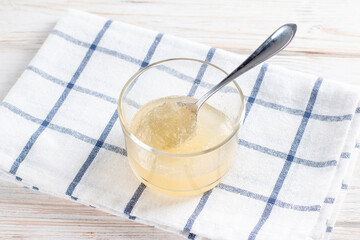
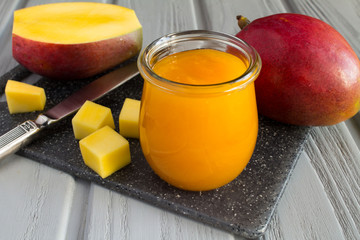
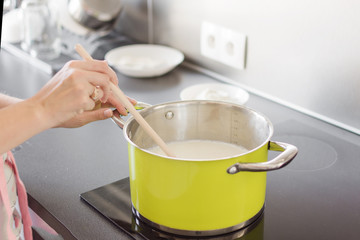
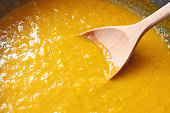

Thank you for visit our website